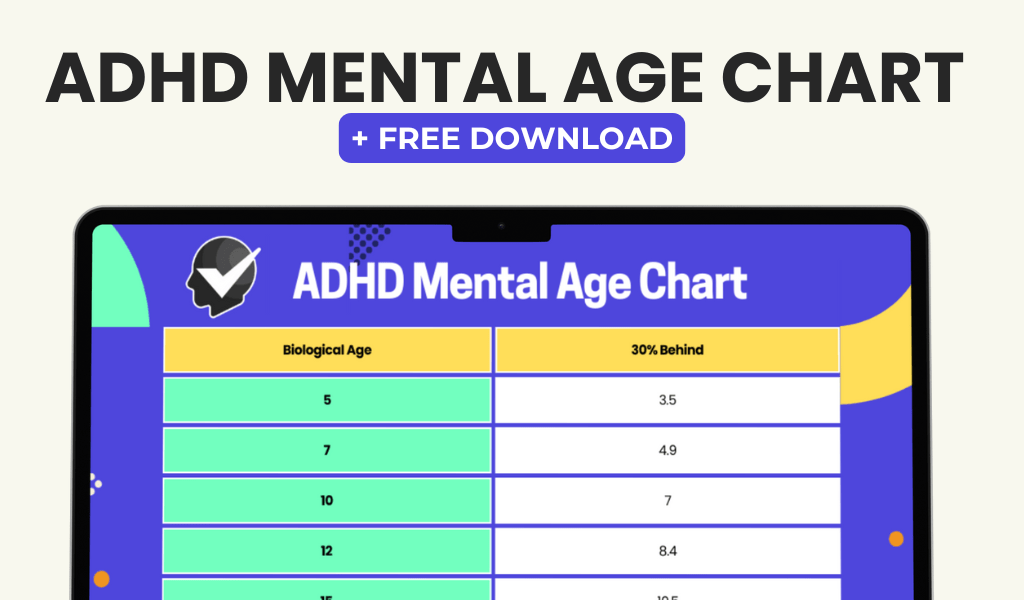ADHD, or Attention Deficit Hyperactivity Disorder, is a neurodevelopmental disorder that affects both children and adults. It is characterized by symptoms of inattention, hyperactivity, and impulsivity. Individuals with ADHD may have difficulty staying focused, following through on tasks, and controlling their impulses. They may also struggle with organization, time management, and maintaining attention to detail. In children, symptoms of ADHD may manifest as fidgeting, squirming, talking excessively, and difficulty waiting their turn. In adults, symptoms may present as restlessness, difficulty completing tasks, and impulsivity in decision-making.
ADHD symptoms can significantly impact an individual’s daily functioning, including their academic performance, work productivity, and relationships. It is important to note that ADHD is a spectrum disorder, meaning that symptoms can vary widely in severity and presentation from person to person. Some individuals may primarily struggle with inattention, while others may exhibit more hyperactive and impulsive behaviors. Additionally, ADHD can co-occur with other neurodevelopmental disorders, further complicating the symptom profile and treatment approach.
ADHD is a complex disorder that requires a comprehensive understanding of its symptoms and how they manifest across the lifespan. By recognizing the diverse ways in which ADHD can present, individuals and healthcare professionals can better support those affected by the disorder.
Understanding the Spectrum of Neurodevelopmental Disorders
Neurodevelopmental disorders encompass a wide range of conditions that affect brain development and functioning. These disorders typically emerge in early childhood and can persist into adolescence and adulthood. In addition to ADHD, other neurodevelopmental disorders include autism spectrum disorder (ASD), intellectual disabilities, communication disorders, and motor disorders. Each of these disorders has its own unique set of symptoms and diagnostic criteria, but they all share the common feature of impacting neurological development.
Autism spectrum disorder, for example, is characterized by challenges with social communication and interaction, as well as restricted and repetitive behaviors. Intellectual disabilities involve limitations in intellectual functioning and adaptive behavior. Communication disorders may manifest as difficulties with speech and language development. Motor disorders can affect an individual’s coordination and motor skills.
It is important to recognize that neurodevelopmental disorders exist on a spectrum, meaning that individuals can experience a wide range of symptoms and levels of impairment. Some individuals may have mild symptoms that only minimally impact their daily lives, while others may have more severe impairments that require significant support and intervention. Understanding the spectrum of neurodevelopmental disorders is crucial for providing appropriate care and support for individuals affected by these conditions.
The Relationship Between ADHD and Other Disorders on the Spectrum
ADHD often co-occurs with other neurodevelopmental disorders, leading to complex symptom presentations and treatment considerations. Research has shown that individuals with ADHD are at an increased risk for also having autism spectrum disorder, learning disabilities, anxiety disorders, depression, and other mental health conditions. The presence of co-occurring disorders can complicate the diagnostic process and necessitate a more comprehensive treatment approach.
For example, a child with ADHD and autism spectrum disorder may exhibit difficulties with social interaction, communication, and repetitive behaviors in addition to the hallmark symptoms of ADHD. This combination of symptoms can pose unique challenges for educators, therapists, and healthcare providers who are working to support the child’s development and well-being. Similarly, adults with ADHD may also struggle with anxiety or depression, further impacting their ability to manage their ADHD symptoms and function effectively in daily life.
Understanding the relationship between ADHD and other disorders on the neurodevelopmental spectrum is essential for providing holistic care to individuals with complex symptom profiles. By recognizing the interconnected nature of these disorders, healthcare professionals can develop targeted interventions that address the diverse needs of individuals with co-occurring conditions.
The Importance of ADHD Testing and Diagnosis
Accurate testing and diagnosis of ADHD are crucial for ensuring that individuals receive appropriate support and treatment. The diagnostic process typically involves a comprehensive evaluation of an individual’s symptoms, medical history, and functional impairments. Healthcare providers may use standardized rating scales, behavioral assessments, interviews with parents or caregivers, and observations of the individual’s behavior to gather information about their symptoms.
It is important for healthcare providers to consider the possibility of co-occurring disorders when assessing for ADHD. This may involve conducting additional assessments for conditions such as autism spectrum disorder, learning disabilities, or mental health disorders. A thorough evaluation can help healthcare providers develop a more complete understanding of an individual’s symptom profile and tailor interventions to address their specific needs.
In addition to testing and diagnosis, it is important for individuals with ADHD to receive ongoing monitoring of their symptoms and treatment response. Regular follow-up appointments with healthcare providers can help ensure that interventions are effective and that any emerging co-occurring conditions are identified and addressed promptly.
Treatment Options for ADHD and Co-occurring Disorders
Treatment for ADHD often involves a combination of behavioral interventions, educational support, and medication management. Behavioral interventions may include parent training, cognitive-behavioral therapy, social skills training, and organizational skills coaching. These interventions aim to help individuals develop strategies for managing their symptoms, improving their executive functioning skills, and enhancing their overall well-being.
Educational support is also critical for children with ADHD, as they may benefit from accommodations in the classroom to address their specific learning needs. This may include extended time on tests, preferential seating, or access to assistive technology. For adults with ADHD, workplace accommodations such as flexible scheduling or organizational tools can help support their success in the workplace.
In some cases, medication may be prescribed to help manage the core symptoms of ADHD, such as inattention and hyperactivity. Stimulant medications like methylphenidate and amphetamine salts are commonly used to improve attention and impulse control in individuals with ADHD. Non-stimulant medications like atomoxetine may also be prescribed for individuals who do not respond well to stimulants or who have co-occurring conditions that contraindicate stimulant use.
When treating individuals with co-occurring disorders, it is important for healthcare providers to consider the potential interactions between different treatments and to develop a comprehensive care plan that addresses all aspects of an individual’s symptom profile.
Strategies for Managing ADHD Symptoms within the Spectrum

Managing ADHD symptoms within the context of the neurodevelopmental spectrum requires a multifaceted approach that addresses the diverse needs of individuals with complex symptom profiles. For children with ADHD and co-occurring conditions such as autism spectrum disorder or learning disabilities, interventions may need to be tailored to address their specific challenges with social interaction, communication, or academic achievement.
Behavioral interventions such as social skills training or specialized educational support can help children develop the skills they need to navigate social situations and succeed academically. For adults with ADHD who also have co-occurring mental health conditions like anxiety or depression, cognitive-behavioral therapy or medication management may be necessary to address their emotional well-being in addition to their ADHD symptoms.
In all cases, it is important for individuals with ADHD on the spectrum to have access to ongoing support from healthcare providers, educators, and caregivers. This may involve regular check-ins with healthcare providers to monitor treatment response, collaboration between educators and therapists to develop individualized education plans, and support from family members to help individuals implement strategies for managing their symptoms in daily life.
Advocating for Individuals with ADHD on the Spectrum
Advocacy plays a crucial role in ensuring that individuals with ADHD on the neurodevelopmental spectrum receive the support and accommodations they need to thrive. This may involve advocating for changes in educational policies to better meet the needs of students with ADHD or working to increase access to mental health services for individuals with co-occurring conditions.
Advocacy efforts can also focus on raising awareness about the diverse ways in which ADHD can present within the neurodevelopmental spectrum. By highlighting the interconnected nature of these disorders and promoting a more nuanced understanding of their impact on individuals’ lives, advocates can help reduce stigma and improve access to appropriate care.
Additionally, advocating for research into effective interventions for individuals with complex symptom profiles can help drive innovation in the field of neurodevelopmental disorders. By supporting efforts to develop targeted treatments for individuals with co-occurring conditions, advocates can help improve outcomes for those affected by ADHD on the spectrum.
In conclusion, ADHD is a complex neurodevelopmental disorder that exists within a spectrum of related conditions. Understanding the diverse ways in which ADHD can present within this spectrum is essential for providing appropriate care and support to individuals affected by the disorder. By recognizing the interconnected nature of neurodevelopmental disorders and advocating for comprehensive interventions that address the diverse needs of individuals with complex symptom profiles, we can work towards improving outcomes for those affected by ADHD on the spectrum.
FAQs
What is ADHD?
ADHD stands for Attention Deficit Hyperactivity Disorder, which is a neurodevelopmental disorder that affects both children and adults. It is characterized by symptoms such as inattention, hyperactivity, and impulsivity.
Where does ADHD fall on the spectrum?
ADHD is not on the autism spectrum. While there may be some overlapping symptoms between ADHD and autism, they are distinct conditions with different diagnostic criteria and treatment approaches.
What is the difference between ADHD and autism?
ADHD and autism are two separate conditions. ADHD primarily involves difficulties with attention, hyperactivity, and impulsivity, while autism involves challenges with social communication and interaction, as well as restricted and repetitive behaviors.
Can a person have both ADHD and autism?
Yes, it is possible for a person to have both ADHD and autism. This is known as comorbidity, where two or more conditions coexist in the same individual. It is important for individuals with comorbid conditions to receive comprehensive and individualized treatment.
How is ADHD diagnosed?
ADHD is typically diagnosed based on a comprehensive evaluation that includes a thorough assessment of the individual’s symptoms, medical history, and any relevant information from parents, teachers, or other caregivers. There is no single test for ADHD, and a diagnosis is made by a qualified healthcare professional based on specific criteria outlined in the DSM-5.
What are the treatment options for ADHD?
Treatment for ADHD may include behavioral therapy, medication, and/or educational interventions. The specific treatment plan will depend on the individual’s symptoms, age, and any coexisting conditions. It is important for individuals with ADHD to work closely with healthcare professionals to develop a personalized treatment approach.














